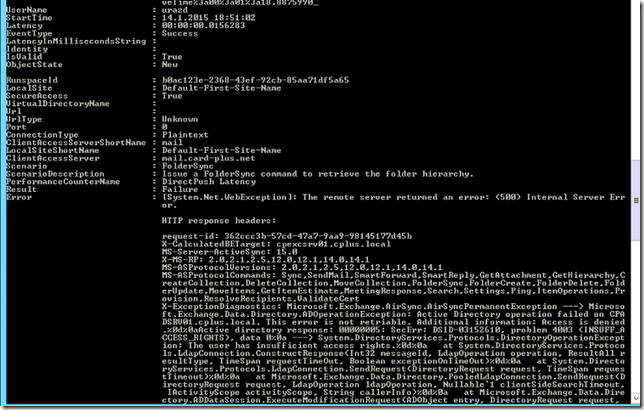Testing Active Sync and fixing access issue on Exchange 2013
If you have an issue with ActiveSync on Exchange 2010/2013 and you want to troubleshoot it, First test ActiveSync from Microsoft Exchange Management shell.
You can use the following cmdlet to start
Test-ActiveSyncConnectivity -MailboxCredential (Get-Credential domain\user) -UseAutodiscoverForClientAccessServer

As you can see in the previous snapshot, the test failed in folder syncing part. But in order to get the full report on the failure we’ll have to add the option | fl and if you want to export the report to a text file you can use the parameter >c:\1.txt which will export the command output to a text file name called 1.txt on the C root drive.


Resolution:
As you can see the eror says “Internal server error” and if you proceed to read the error in the middle it says “Active Directory operation failed on DC.server.local. This error is not retriable. Additional information: Access is denied. Active Directory response: 000000005 up to <INSUFF_ACCESS_RIGHTS>. Searching for this error a little bit I found that it’s related to Inheritance under the user’s security advanced settings.


Once this was applied the user was able to log in from mobile without an issuedel.icio.us Tags: Exchange,ActiveSync,ActiveDirectory,Exchange Mobile.